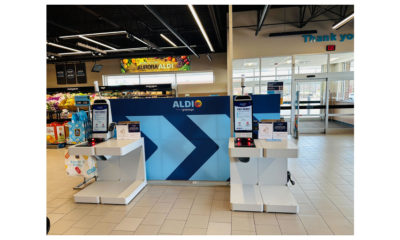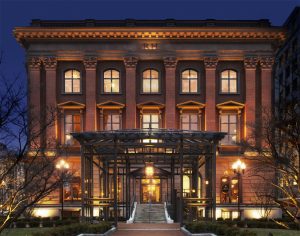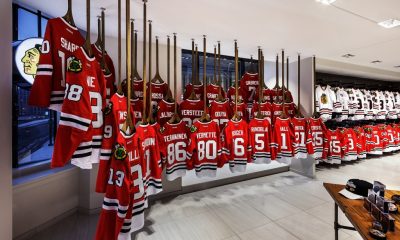In September, RH Inc. (Corte Madera, Calif.) reported another solid three-month performance in the second quarter of 2019. Net income was up 12.5 percent from a year earlier and net revenues were up 10 percent, both exceeding Wall Street’s expectations.
At the close of trading that day, RH’s stock price had risen more than 6 percent, up more than 41 points since the beginning of the calendar year.
“RH has zigged while other retailers have zagged,” chortled Yahoo! Finance, “and it has been rewarded for its ability to expand in a quickly changing retail landscape.”
“CEO Gary Friedman was quick to point to the success of his overall strategy in helping to get the retailer back into full growth mode,” reported The Motley Fool.
“We believe … we are building a brand with no peer,” Friedman boasted in his company’s report. “[W]e are creating a customer experience that cannot be replicated online; and … we have total control of our brand from concept to customer.”
There are not many other retail stocks that seem to capture the twinkle in Wall Street’s eyes these days. Of course, RH had once before been a Wall Street favorite – until it wasn't.
Advertisement

Photography: Bergmeyer, Boston
But it’s not for its stock performance or earnings that RH has been named winner of the 2019 VMSD/Peter Glen Retailer of the Year by VMSD's Editorial Advisory Board. The award honors attributes that Glen – the late, long-time VMSD columnist and retail design veteran – appreciated, especially as retail began to evolve in the late 1990s. Those include strong self-awareness, the power of the brand and, especially in this case, a retailer’s ability to survive a fall, understand what went wrong and course-correct into even-more-stunning success.
RH is the retailer formerly known as Restoration Hardware, which gobbled up much of the buzz in the go-go high-concept world of 1990s retailing. In 1997, The New York Times called the store a refuge for baby boomers who could “behold foundry scoops placed artfully in pharmacy jars, galvanized aluminum Canadian miners’ lunch boxes arranged like design-museum icons and artisan-designed door knockers in the shape of dragonflies.”
At its peak, three years after it went public in 1998, Restoration Hardware had 100 stores in 31 states with 2001 net sales of $370 million. Its IPO, valued at $4.50 a share, netted $62 million.
But where can you go from a peak except down? Founder Stephen Gordon left the company in 2005. The stock price plummeted to 50 cents a share. Three years later, the company was acquired by equity investor Catterton Partners (Greenwich, Conn.) and taken private.
The recession hit, the housing bubble burst and RH began closing stores. End of a great retail story?
Advertisement
Friedman, a former Pottery Barn and Williams-Sonoma executive, had become CEO during the dark days. But he retained a determination to reframe the RH story. And, looking around at the retail rubble, he told shareholders, “The road of endless promotions, free shipping and a shrinking store base is resulting in broken and unsustainable retail models.”
What he held onto, though, was Restoration Hardware’s positioning for high design quality and premium prices. He took the company public again in 2012, this time at $24. (The day after RH’s September 2019 quarterly report, the stock price jumped to $160.)
Friedman understood the significance of online retailing, but he retained a vision of a robust bricks-and-mortar operation, as well. In August, Curbed.com wrote, “[Friedman] has changed the fortunes of a furniture retailer by reinventing its approach for 21st century commerce by not just going online but rethinking the in-store experience.”
“Gary is driven by this idea of transforming and disrupting what everyone thinks of as a typical home store,” says Lynn Gonsior, Partner and COO of retail consulting firm ChangeUp (Dayton, Ohio). “He comes at it from a straight head-on experiential strategy, the idea of transporting you to this feeling within your home.”
The new retail strategy includes carefully chosen urban sites, often in historic buildings, with vast lifestyle interiors – high-end spaces with cafes and restaurants – referred to as “galleries.”

Photography: Ty Cole/Otto, New York
Advertisement
“We do understand the strategies we are pursuing [go against the grain],” says Friedman, “opening the largest specialty retail experiences in our industry while most are shrinking the size of their retail footprint or closing stores; moving from a promotional to a membership model, while others are increasing promotions, positioning their brands around price versus product.”
To that point, he says, “We are on track to open RH Minneapolis, the Gallery in Edina; RH Columbus, the Gallery at Easton Town Center; and RH Marin, the Gallery at the Village of Corte Madera [Calif.], in the second half. These new prototype Galleries average 45,000 square feet of indoor and outdoor selling space spanning three levels with rooftop parks, restaurants, barista bars and consumer-facing RH Interior Design offices … Looking forward, we expect to accelerate our real estate transformation to a rate of five to seven new Galleries in fiscal 2020 and seven or more new Galleries in fiscal 2021.”
RH’s flagship New York gallery is a three-story, glass-encased structure with a restaurant and rooftop garden in Manhattan’s Meatpacking District. In Yountville, Calif., Napa Valley territory, it’s a two-story stone wine vault with outdoor trellis-covered living rooms and an indoor-outdoor restaurant with a glass roof.
The 70,000-square-foot Chicago location, on North Dearborn Street in the city’s tony Gold Coast neighborhood, features a restaurant, rooftop bar and espresso and pastry bar. Nor are the stores’ food offerings simple window dressing. Friedman has said, “Three of our four restaurants [are] trending to generate $5 million to $6 million annually, and our fourth at approximately $4 million.”
And the new gallery in Boston (site of this year’s IRDC), designed by Boston-based Bergmeyer, renovates the historically elegant Louis Boston menswear store – which runs between two of the city’s main retail strips, Newbury and Boylston streets – a manse originally built during the Civil War for the Boston Society of Natural History.
“The goal was to reclaim the original grandeur of the historic neoclassical building … for a luxury lifestyle brand,” says Bergmeyer VP Rachel Zsembery. “The design celebrates the building’s historic character while introducing new architectural elements with simplicity and restraint.”
Even with its emphasis on physical stores, RH has not ignored the e-tail phenomenon. It addresses that channel with a private membership program aimed at both in-store and online trade.
“Since even large in-store purchases have to be delivered, RH benefits shoppers who order online,” says Bill Chidley, ChangeUp’s Partner and Executive Director of Strategy. The Amazon Prime-like benefit offers discounts on future purchases, “capturing future dollars and making the brand more sticky.”
The cost of the program is $100 a year, “which seems like nothing if you’re going to spend $12,000 on a room,” Chidley says. “If you’re going to go in there to buy a couple of drapery rods, it doesn’t make as much sense.
“Although,” he notes dryly, referencing RH’s luxury prices, “at RH, even a couple of drapery rods could end up paying for the whole premium program.”


 Photo Gallery3 days ago
Photo Gallery3 days ago
 Headlines1 week ago
Headlines1 week ago
 Sector Spotlight2 weeks ago
Sector Spotlight2 weeks ago
 Headlines1 week ago
Headlines1 week ago
 Headlines4 days ago
Headlines4 days ago
 Headlines2 weeks ago
Headlines2 weeks ago
 Designer Dozen1 week ago
Designer Dozen1 week ago
 Headlines2 days ago
Headlines2 days ago
























